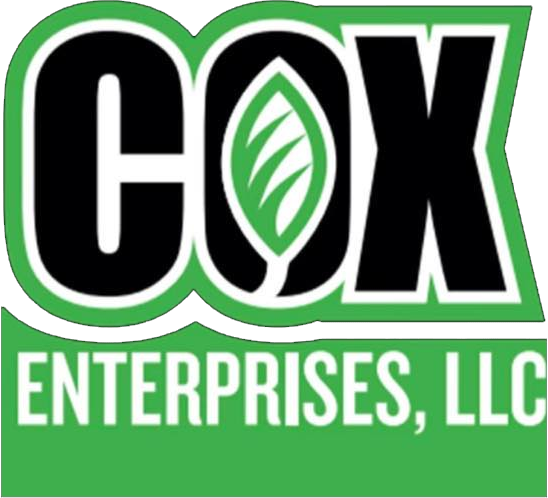Septic systems are an essential part of many Maryland homes, particularly in rural and suburban areas where municipal sewer connections aren’t available. While these systems are designed to be durable and long-lasting, they require regular maintenance to function properly. Among the most critical maintenance tasks is regular septic tank pumping—a service that many homeowners overlook until problems arise.
At Cox Enterprises, we’ve seen firsthand how proper maintenance can extend a septic system’s lifespan by decades, while neglect can lead to costly failures and environmental hazards. This guide explains why regular pumping is essential and how to determine the right schedule for your home.

Why Regular Septic Tank Pumping is Essential for System Health
Your septic tank is designed to separate solid waste from liquid waste. As wastewater enters the tank, heavier solids settle to the bottom forming sludge, while lighter materials like oils and fats float to the top creating a scum layer. The relatively clear liquid in the middle (effluent) flows out to the drainfield for further natural treatment.
Over time, sludge and scum layers thicken, reducing the tank’s effective capacity. Without regular pumping:
- Solids can escape into the drainfield, clogging soil pores
- System backup can occur, causing wastewater to return to your home
- Harmful bacteria and contaminants may leach into groundwater
- Complete system failure may necessitate expensive replacement
According to the EPA, replacing a failed septic system can cost $3,000 to $10,000, while regular maintenance through pumping typically costs $250 to $500 every 3-5 years—making prevention significantly more economical than repair.
Common Problems Caused by Neglecting Pumping
Neglecting regular septic tank pumping can lead to several serious issues:
System Backups
When sludge levels become too high, wastewater has nowhere to go but back up into your home’s plumbing. This often results in:
- Toilets that drain slowly or not at all
- Gurgling sounds in pipes
- Sewage backing up into sinks, tubs, or floor drains
- Unpleasant odors throughout the home
Drainfield Failure
The drainfield is the most expensive component of your septic system to replace. When solids escape an overfilled tank, they can permanently damage the drainfield by:
- Clogging soil pores needed for filtration
- Creating a biomat layer that prevents proper drainage
- Causing surfacing of effluent in your yard
- Contaminating nearby water sources
Structural Damage
Excessive buildup in the tank can lead to:
- Corrosion of concrete or metal components
- Weakening of tank baffles and walls
- Increased pressure on tank seams and connections
- Premature system aging and failure
For more detailed information about septic system components and how they work together, visit our Septic System Maintenance 101 guide.
How Often Should You Pump Your Septic Tank?
The frequency of septic tank pumping depends on several factors specific to your household and system. While general guidelines suggest pumping every 3-5 years, your optimal schedule may differ based on:
Household Size
The number of people regularly using your system significantly impacts pumping frequency:
| Household Size | Recommended Pumping Interval |
|---|---|
| 1-2 people | Every 5-6 years |
| 3-4 people | Every 3-4 years |
| 5+ people | Every 2-3 years |
Tank Size
Larger tanks can accommodate more waste before requiring pumping:
| Tank Size (gallons) | Average Family (4 people) |
|---|---|
| 750 | Every 1.5-2 years |
| 1,000 | Every 2.5-3 years |
| 1,500 | Every 3.5-4 years |
| 2,000+ | Every 4.5-5 years |
Water Usage Patterns
Homes with high water usage require more frequent pumping. Factors that increase water usage include:
- Multiple daily showers or baths
- Frequent laundry (more than 5-6 loads weekly)
- Running water while brushing teeth or washing dishes
- Water softeners that discharge into the septic system
- Leaking fixtures or running toilets
Garbage Disposal Use
Using a garbage disposal increases solid waste entering your septic tank by approximately 50%. If your home has a garbage disposal that’s used regularly, you should:
- Reduce the time between pumpings by 1-2 years
- Consider more frequent inspections
- Be especially vigilant about what goes down the disposal
For professional assessment of your specific pumping needs, schedule a Septic System Inspection with our certified technicians.
Benefits of Regular Pumping
Preventing Backups and System Failures
Regular pumping removes accumulated solids before they can cause problems, significantly reducing the risk of:
- Emergency backups that can damage your home
- System failures during high-use periods (holidays, parties)
- Contamination of your property with untreated wastewater
- Costly emergency service calls (which typically cost 1.5-2x more than scheduled maintenance)
Extending the Lifespan of Your Septic System
A properly maintained septic system can last 25-30 years or more, while neglected systems often fail in 10-15 years. Regular pumping:
- Prevents excessive strain on system components
- Reduces the risk of drainfield clogging
- Allows for early identification of potential issues
- Maintains optimal bacterial balance for waste breakdown
Protecting Property Value
A well-maintained septic system is an asset to your property, while a failed system can significantly reduce home value. Regular pumping:
- Provides documentation of proper maintenance for potential buyers
- Prevents landscaping damage from system failures
- Avoids unpleasant odors that can deter visitors or buyers
- Complies with local health department requirements
Environmental Protection
Properly functioning septic systems protect Maryland’s waterways and groundwater. Regular pumping helps:
- Prevent untreated wastewater from contaminating groundwater
- Protect the Chesapeake Bay watershed from nutrient pollution
- Reduce harmful bacteria in local streams and rivers
- Maintain soil health on your property
For more information about our Septic Tank Pumping services, including current pricing and scheduling options, visit our dedicated service page.
Signs Your Septic Tank Needs Pumping
While following a regular schedule is ideal, certain warning signs indicate your tank needs immediate attention, regardless of when it was last pumped:
Slow Drains
When multiple drains throughout your home begin to slow down, it often indicates that your septic tank is approaching capacity. Pay particular attention to:
- Toilets that take longer to flush or require multiple flushes
- Bathtubs and showers that drain slowly after use
- Sinks that take longer to empty than usual
- Washing machines that cause water to back up in other fixtures
Odors
Unpleasant sewage odors, either inside or outside your home, are never normal and often indicate septic issues:
- Persistent rotten egg smell near drains
- Sewage odors in your yard, especially near the tank or drainfield
- Musty smells in basements or crawl spaces
- Strong odors after rainfall or during high water usage
Pooling Water
Wet areas in your yard, particularly over the drainfield or septic tank, suggest that the system is not processing wastewater properly:
- Unusually lush, green grass over the drainfield area
- Soggy ground that doesn’t dry after rain has stopped
- Standing water that appears even during dry weather
- Water backing up in basement floor drains
Gurgling Sounds
Unusual sounds in your plumbing system often indicate that wastewater is struggling to move through the pipes due to blockages or backups:
- Gurgling toilets when flushed or when using other fixtures
- Bubbling sounds from drains when water is running elsewhere
- Unusual noises from washing machine or dishwasher drains
- Consistent bubbling in toilet bowls even when not in use
Sewage Backups
The most severe sign—and one you want to avoid—is actual sewage backing up into your home:
- Wastewater coming up through drains
- Toilets that overflow with sewage rather than clear water
- Black water appearing in tubs or showers
- Sewage odors accompanying backup events
If you notice any of these warning signs, contact Cox Enterprises immediately for emergency Septic System Inspections and pumping services.
The Septic Pumping Process
Understanding what happens during a professional septic pumping service can help you appreciate its importance:
1. Locating and Accessing the Tank
Our technicians will:
- Locate your septic tank using system maps or electronic locators
- Carefully dig to expose the access lid(s)
- Safely open the tank while minimizing disturbance to your yard
2. Inspection Before Pumping
Before pumping begins, we conduct a visual inspection to:
- Check for obvious cracks or damage to the tank
- Assess the levels of scum and sludge
- Examine baffles and outlets for potential issues
- Note any unusual conditions that might indicate problems
3. Complete Pumping Process
Our thorough pumping process includes:
- Removing all liquid, scum, and sludge from the tank
- Cleaning filters and screens as needed
- Backflushing to remove stubborn solids from corners
- Proper disposal of waste at approved treatment facilities
4. Final Inspection and Documentation
After pumping, we:
- Inspect the empty tank for signs of damage
- Check inlet and outlet pipes for proper flow
- Document the condition of your system
- Provide recommendations for future maintenance
5. Proper Closure and Site Restoration
Finally, we:
- Securely replace and seal all access lids
- Carefully backfill any excavated areas
- Clean up the work area
- Leave your yard in the same or better condition than we found it
Maintaining Your Septic System Between Pumpings
While regular pumping is essential, proper daily habits help maintain system health between service visits:
Water Conservation
Reducing water usage eases the burden on your septic system:
- Fix leaking fixtures promptly
- Install water-efficient toilets and appliances
- Spread laundry loads throughout the week
- Take shorter showers and avoid filling bathtubs completely
Proper Waste Disposal
Be mindful of what enters your septic system:
- Never flush “flushable” wipes, feminine products, or paper towels
- Avoid pouring grease, oil, or fat down drains
- Limit garbage disposal use
- Never dispose of chemicals, paints, or medications in drains
Regular Inspections
Between pumpings, have your system professionally inspected:
- Every 1-2 years for older systems
- After major household changes (additional residents, remodeling)
- If you notice any warning signs
- Before purchasing a home with a septic system
Conclusion
Regular septic tank pumping is not just a maintenance task—it’s an investment in your home’s infrastructure, your family’s health, and the environment. By establishing and following a pumping schedule appropriate for your household, you can avoid costly repairs, extend your system’s lifespan, and maintain your property’s value.
At Cox Enterprises, our certified septic professionals provide comprehensive pumping services throughout Maryland. We use modern equipment and environmentally responsible disposal methods to ensure your system receives the care it deserves.
Don’t wait until problems arise. Contact Cox Enterprises today to schedule your septic tank pumping service and take the first step toward worry-free septic system management. Our team will assess your system’s specific needs and recommend the optimal maintenance schedule for your home.

